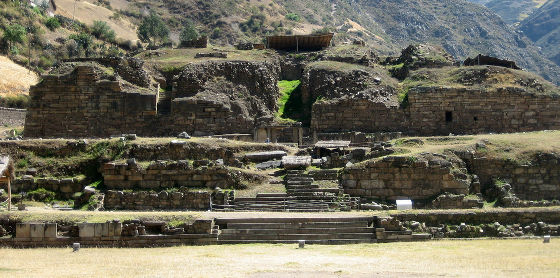Archeologists discovered "origin of power" in Peru's Andean

ByJason train
In the past, "governance by authority" did not exist anywhere in the world, but now "authority" is the basis of the organization and the idea of "who is responsible" It is in the head of. When was this system found, the archaeologists who study the ruins in the Andes of Peru discovered the key to solve the mystery.
Stanford archaeologist traces the origins of authority to the Andes of Peru | Stanford News
https://news.stanford.edu/2016/04/25/stanford-archaeologist-traces-origins-authority-andes-peru/
A ruin of about 3000 years ago in Peru and Andes registered as a UNESCO World Heritage SiteChavin de WantaruIt is Professor John Rick of Stanford University which is studying ". Chavin de Wantar is a place where culture is seen as being developed from 900 BC to 200 years ago. Professor Rick has gathered evidence showing the process of authority system development in Chavin de Wantar for more than 20 years, and gradually said that "the existence of" religion "is important in the process in which a class system is created It was clear that it was playing a role. "

ByPunki :)
Chavin de Wantaru, which is located 250 km north of Lima, functions as a religious center at the time, and the priests took visitors a variety of day-to-day operations dealing with light, water, sound etc. It was imposing. "These will confirm the idea that people were being operated through ceremonial acts in buildings," said Rick. According to Prof. Rick, as time goes on, equipment, objects, behaviors, etc. that show the existence of authority are provided and the authority has increased.
In the past archaeological studies targeting Chavin de Wantal thought that Chavin de Wantar attracted people because it was a place of devotion, but those who gather at Chavin de Wantaru There were few ordinary people in the area, and most of the leaders in the area that came from selected pilgrims and central Andean came from, mostly Rick's professors said, "Legal for raising your position and standing in a position to control society I concluded that Chavin de Wantaru was being used as a place where people who asked for "why" were gathered. People gathering at Chavin de Wantal were just in the process of making "class" in the society in which they belonged.

ByMichael Coghlan
In addition, Rick and his colleagues discovered places like galleries like a labyrinth of about 2 kilometers in length under the ruins. It is believed that this place was for clerics to manipulate visitors and keep them confined. In addition, the leaders of Chavin de Wantar carved his own work on a stone, and it is also thought that the contents engraved on the stone used drugs that influence the spirit to pilgrims It is.

ByFanny & amp; Greg
In addition, a complex hydraulic system that drains water from the underground canal was used in buildings. Despite the dangers of flooding, forcing water to forcibly, the clerics of Chavin de Wantal were trying to control the flow of water. It is believed that the action of showing the people that they control nature is the evidence that the priests were taking action to show their authority.
The mining work is still continuing, and the above contents are just an example of the existence of "authority" in Chavin de Wantar. Many still mysteriously wonder what the Chavin de Wantal pilgrims were experiencing in the underground space and what supernatural powers of the priests were witnessed, From the facts like Rick's professor explores human psychology in Chavin de Wantar, "By experimenting how people respond to specific stimuli", the charismatic leader I conclude that a complex society with authoritarian existence was born.

ByMatthew
Related Posts:
in Note, Posted by darkhorse_log







